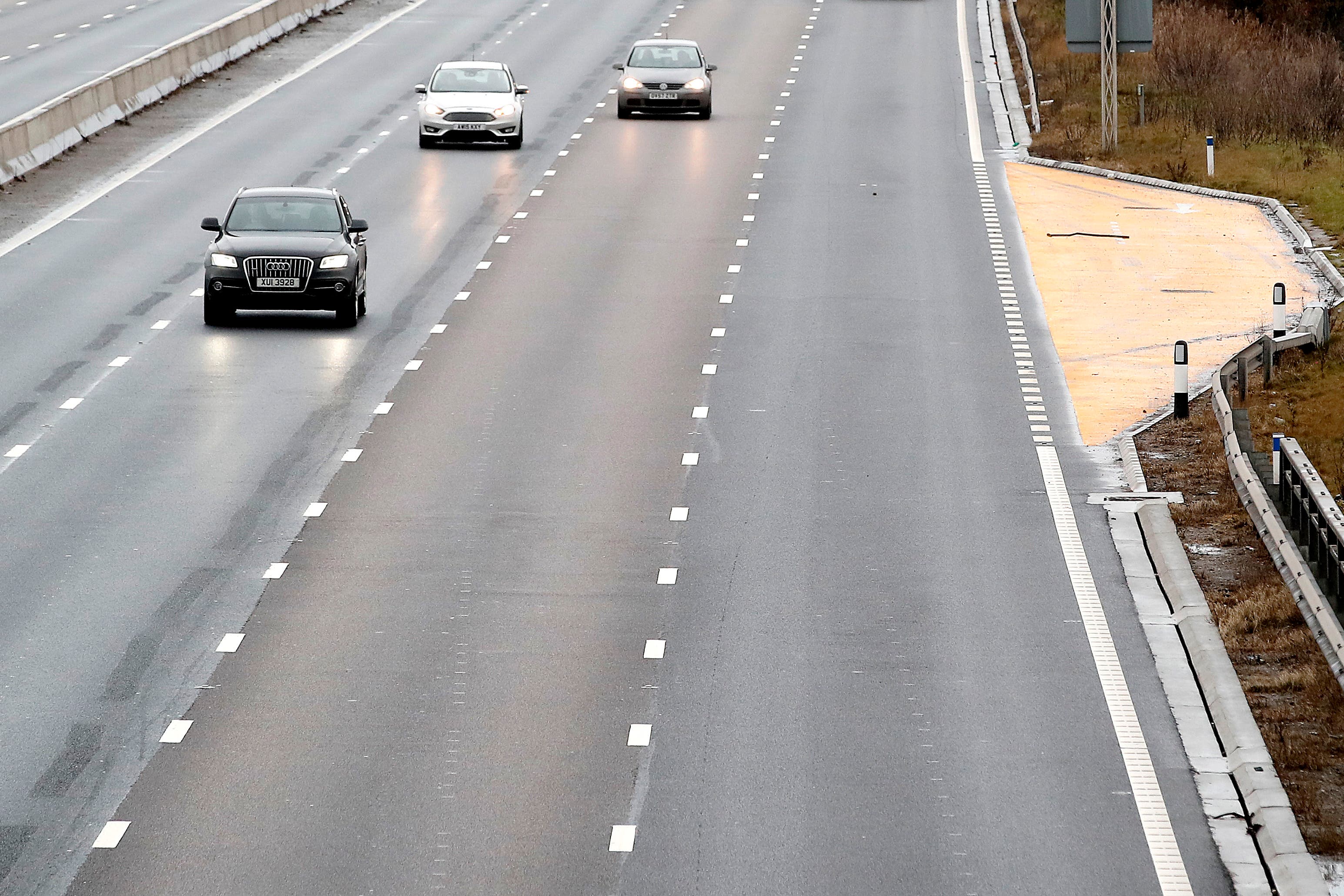Benefits of smart motorways ‘wasted’ as drivers avoid extra lane – survey
The RAC said the research ‘completely undermines’ the main reason for turning hard shoulders into running lanes.

Your support helps us to tell the story
From reproductive rights to climate change to Big Tech, The Independent is on the ground when the story is developing. Whether it's investigating the financials of Elon Musk's pro-Trump PAC or producing our latest documentary, 'The A Word', which shines a light on the American women fighting for reproductive rights, we know how important it is to parse out the facts from the messaging.
At such a critical moment in US history, we need reporters on the ground. Your donation allows us to keep sending journalists to speak to both sides of the story.
The Independent is trusted by Americans across the entire political spectrum. And unlike many other quality news outlets, we choose not to lock Americans out of our reporting and analysis with paywalls. We believe quality journalism should be available to everyone, paid for by those who can afford it.
Your support makes all the difference.Nearly half (49%) of drivers say they frequently or occasionally avoid using lane one on smart motorways without a hard shoulder, a new survey suggests.
The RAC, which commissioned the poll of 1,904 motorists, claimed the research “completely undermines” the main reason for turning hard shoulders into running lanes, which was to boost road capacity.
A fifth (21%) of respondents who have driven on these all-lane running smart motorways said they frequently stay out of the left-hand inside lane, while 28% said they do so occasionally.
These roads continue to be deeply unpopular with drivers
Asked why they deliberately avoid driving in lane one, 77% said they are worried they may encounter a stationary vehicle, while 40% are fearful of being hit if they had to stop.
Almost three in four (74%) people questioned said they would feel safer if there were more emergency refuge areas.
The Highway Code says drivers should “keep in the left lane unless overtaking”, but there have been long-standing fears about smart motorways following crashes in which vehicles stopped in live lanes were hit from behind.
Around 10% of England’s motorway network is made up of smart motorways.
They involve various methods to manage the flow of traffic, such as converting the hard shoulder into a live running lane and variable speed limits.
These all-lane running smart motorways boost capacity at a lower cost than widening roads.
RAC road safety spokesman Simon Williams said: “Ever since the first all lane running smart motorway opened on the M25 in April 2014, there has been a considerable amount of controversy about safety which worsened significantly following several high-profile fatal collisions.
“Consequently, these roads continue to be deeply unpopular with drivers who, before their introduction, had been used to having the relative refuge of a hard shoulder available in an emergency.
“Our latest research worryingly shows that half of drivers actively avoid using the inside-most lane for a variety of reasons, not least the fear of being crashed into, meaning much of the extra carriageway capacity they were meant to bring is wasted.
“Motorists know they should always drive in left-most lane they can, but with so many feeling theirs and their passengers’ lives are in jeopardy, it’s going to be very hard to convince them otherwise no matter how much extra safety technology is introduced.”
National Highways has insisted smart motorways are safer than conventional motorways and completed a series of improvements by the end of September.
Stopped vehicle detection technology was retrofitted to all smart motorways without a hard shoulder.
Installation of additional signs showing the distance to the next emergency stopping area was completed, and all enforcement cameras were upgraded to enable detection of closed lane violations.
A target of traffic officers reaching stopped vehicles on all-lane running smart motorways within 10 minutes was also achieved for the first time.
A National Highways spokesperson said: “We are committed to taking action to help drivers and their passengers feel safe and be even safer on all our roads.
“We are taking steps to further increase confidence in smart motorways. We have already added technology to detect stopped vehicles and are preparing a £390 million programme to retrofit an additional 150 emergency areas by 2025. This will represent around a 50% increase in emergency areas, giving drivers added reassurance.”